Pushkin Museum of Fine Arts, Moscow
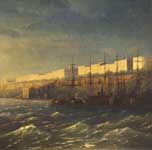
Odessa. Embankment, Ivan Konstantinovich Aivazovsky

Skating, Hendrick Avercamp

An Oriental Barbershop, Leon Bonnat

Portrait of a Lady, Gerard ter Borch the Younger

Altar of the Last Judgement : Annunciation, Sandro Botticelli
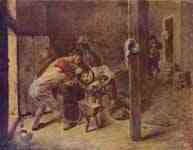
The scuffle, Adriaen Brouwer
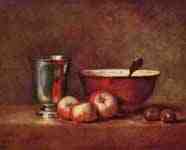
Still life, Jean-Baptiste Siméon Chardin

View of Highgate, John Constable
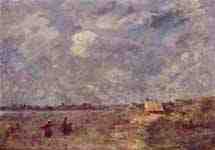
Stormy Weather . Banks of the Pas-de-Calais, Jean-Baptiste-Camille Corot
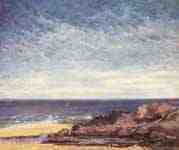
Sea coast in Normandy, Gustave Courbet
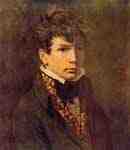
Porträt des Künstlers Ingres, Jacques-Louis David
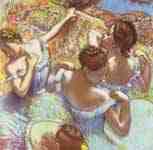
Dancers in Blue, Edgar Germain Hilaire Degas

The Dancer at the Photographer, Edgar Germain Hilaire Degas
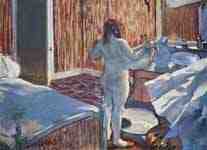
Woman at Her Toilette, Edgar Germain Hilaire Degas

Kneeling woman, Edgar Germain Hilaire Degas
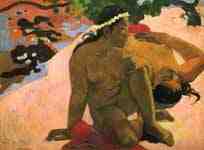
What ? Are you jealous ? ( Aha oe feii ? ), Paul Gauguin
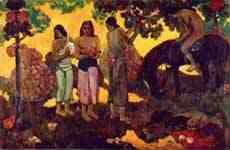
Rupe Rupe ( Fruit harvest), Paul Gauguin

Still Life with Fruit, Paul Gauguin
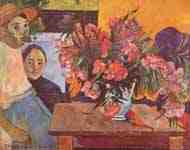
Large Bouquet with Tahitian children, Paul Gauguin
In the cafe ( portrait of Mme Ginoux ), Paul Gauguin
Landscape with peacocks ( Matamoe ), Paul Gauguin
Landscape ( horse on the way ), Paul Gauguin

The sea at Saintes -Maries, Vincent Willem van Gogh
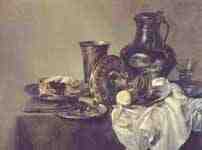
Still life, Willem Claesz. Heda
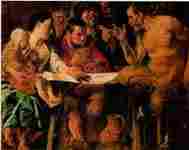
The Satyr and the Peasant, Jacob Jordaens

Female portrait, Nicolas de Largillière
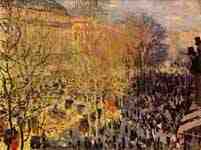
Boulevard des Capucines in Paris, Claude Monet

Girl with fruits and flowers, Bartolomé Esteban Perez Murillo
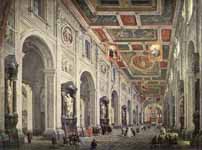
Interior of the San Giovanni in Laterano in Rome, Giovanni Paolo Pannini
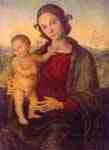
Madonna, Pietro Perugino

Rinaldo and Armida, Nicolas Poussin
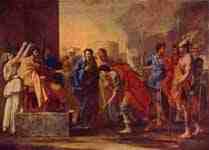
The Continence of Scipio, Nicolas Poussin

Two girls in black, Pierre-Auguste Renoir
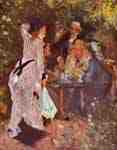
In the garden, Pierre-Auguste Renoir
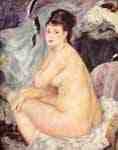
Female Nude (Anna ), Pierre-Auguste Renoir
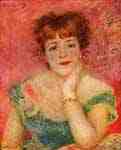
Portrait of Jeanne Samary, Pierre-Auguste Renoir
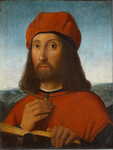
Portrait of a Man with Red Beret and Book, Antonio de Saliba

Monkey looking at a waterfall, Asai Seishu

Dragon in the Clouds, Asai Seishu

Death of Dido, Giovanni Battista Tiepolo

Portrait of Zhenya Dolgorukova , Jean-Louis Voille
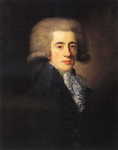
Portrait of Nikita Petrovich Panin (1770-1837), Russian diplomat, Jean-Louis Voille
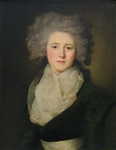
Portrait of Anna Stroganova (1765-1824), Jean-Louis Voille
Fine Art Prints | Greeting Cards | Phone Cases | Lifestyle | Face Masks | Men's , Women' Apparel | Home Decor | jigsaw puzzles | Notebooks | Tapestries | ...
The Pushkin State Museum of Fine Arts (Russian: Музей изобразительных искусств им. А.С. Пушкина) is the largest museum of European art in Moscow, located in Volkhonka street, just opposite the Cathedral of Christ the Saviour. The International musical festival Svyatoslav Richter's December nights has been held in the Pushkin museum since 1981.
Etymology
The museum's current name is somewhat misleading, in that it has no direct associations with the famous Russian poet Alexander Pushkin, other than as a posthumous commemoration of his name and fame. The facility was founded by professor Ivan Tsvetaev (father of the poet Marina Tsvetaeva). Tsvetaev persuaded the millionaire and philanthropist Yuriy Nechaev-Maltsov and the fashionable architect Roman Klein of the urgent need to give Moscow a fine arts museum. After going through a number of name-changes, particularly in the transition to the Soviet-era and the return of the Russian capital to Moscow, the museum was finally renamed to honour the memory of Pushkin in 1937, the 100th anniversary of his death.
Building
The Pushkin State Museum of Fine Arts' building was designed by Roman Klein and Vladimir Shukhov and financed primarily by Yury Nechaev-Maltsov. Construction work began in 1898 and continued till 1912. Ivan Rerberg headed structural engineering effort on the museum site for 12 years, till 1909.
In 2008, President Dmitri A. Medvedev announced plans for a $177 million restoration.[1] A Rbn22 billion ($670 million) expansion, developed by Norman Foster in collaboration with local architectural firm Mosproject-5, was confirmed in 2009, but became mired in disputes with officials and preservationists and concern grew that it would not be completed on schedule for 2018. After Moscow’s chief architect Sergei Kuznetsov issued an ultimatum, demanding that Foster take a more active role in the project and prove his commitment by coming to the Russian capital within a month, Norman Foster’s firm resigned from the project in 2013.[2] In 2014, Russian architect Yuri Grigoryan, and his firm Project Meganom, were chosen to take over the project. Grigoryan’s design provides new modern buildings and, following the protest of heritage groups who campaigned to save the pre-revolutionary architecture, preserves the historic 1930s gas station near the Pushkin’s main building inside a glass structure.[3]
Collection
Fine Art Collection
André Derain, 1905, Le séchage des voiles (The Drying Sails), oil on canvas, 82 x 101 cm. Exhibited at the 1905 Salon d'Automne
Tsvetaev's dream was realised in May 1912, when the museum opened its doors to the public. The museum was originally named after Alexander III, although the government provided only 200,000 rubles toward its construction, in comparison with over 2 million from Nechaev-Maltsev. Its first exhibits were copies of ancient statuary, thought indispensable for the education of art students. The only genuinely ancient items - Moscow Mathematical Papyrus and Story of Wenamun - had been contributed by Vladimir Golenishchev three years earlier.
After the Russian capital was moved to Moscow in 1918, the Soviet government decided to transfer thousands of works from St Petersburg's Hermitage Museum to the new capital. The entire collection of Western art from the Museum Roumjantsev was added too. These paintings formed a nucleus of the Pushkin museum's collections of Western art. But the most important paintings were added later from the State Museum of New Western Art. These comprised Impressionist and Post-Impressionist artwork, including top works by Van Gogh, Gauguin, Picasso, Dufrénoy, Derain and Matisse. Among them, Van Gogh's "La Vigne Rouge", apparently the only painting sold during the artist's lifetime.[4] In 1937, Pushkin's name was appended to the museum, because the Soviet Union marked the centenary of the poet's death that year.
Archaeological Collection
After the World War II the evacuated Dresden Gallery had been stored in Moscow for 10 years. The Dresden collection was finally returned to East Germany, despite strong opposition from the museum officials, notably Irina Antonova, who has been running the museum since February 1961. The Pushkin Museum is still a main depositary of Troy's the so-called Priam's Treasure gold hoard removed from Troy by the German archaeologist, Heinrich Schliemann[5][6] and later taken by the Soviet Army (Red Army) from the Pergamon Museum in Berlin;[7] as well as other artifacts taken from Germany during the Soviet occupation at the end of the Second World War.
Numismatic Collection
The Pushkin Museum has a numismatic collection which is unpublished. It includes archaeological material from Central Asia, such as a hoard of Kushano-Sasanian coins acquired in 2002[8]
References
Lawrence Van Gelder (May 9, 2008), Pushkin Museum Overhaul Planned New York Times.
Sophia Kishkovsky (August 16, 2013), Norman Foster resigns from Pushkin Museum expansion The Art Newspaper.
Sophia Kishkovsky (July 2, 2014), Pushkin hires Moscow architect for expansion The Art Newspaper.
"Anna Boch.com, the woman that bought the only painting Van Gogh sold during his life". Annaboch.com. 1986-03-03. Retrieved 2012-06-11.
German archaeologist Heinrich Schliemann who, in 1873, illegally smuggled from Turkey to Athens the Early Bronze Age hoard of precious metalwork known as "Priam's Treasure," which he had discovered. (English) Emma Blake, Arthur Bernard Knapp (2005). The archaeology of Mediterranean prehistory. p. 307. ISBN 0-631-23268-0. Retrieved 2009-08-27.
Schliemann illegally smuggled the loot to Berlin, convinced he had found evidence of the Iliad's famed ancient city.(English) "Top 10 Plundered Artifacts - Priam's Treasure". www.time.com. 2009-03-05. Retrieved 2009-08-27.
Tolstikov, Vladimir; Treister, Mikhail (1996). The Gold of Troy. Searching for Homer's Fabled City. Harry N. Abrams. ISBN 0-8109-3394-2.
Smirnova, N (1996). "Vasudeva Imitations and Kushano Sasanian Coppers from Turkmenistan". Moneti i Medali. pp. 130–133.
Further reading
William Craft Brumfield. The Origins of Modernism in Russian Architecture (Berkeley: University of California Press, 1991) ISBN 0-520-06929-3
---
Fine Art Prints | Greeting Cards | Phone Cases | Lifestyle | Face Masks | Men's , Women' Apparel | Home Decor | jigsaw puzzles | Notebooks | Tapestries | ...
---
Artist
A - B - C - D - E - F - G - H - I - J - K - L - M -
N - O - P - Q - R - S - T - U - V - W - X - Y - Z
Retrieved from "http://en.wikipedia.org/"
All text is available under the terms of the GNU Free Documentation License


